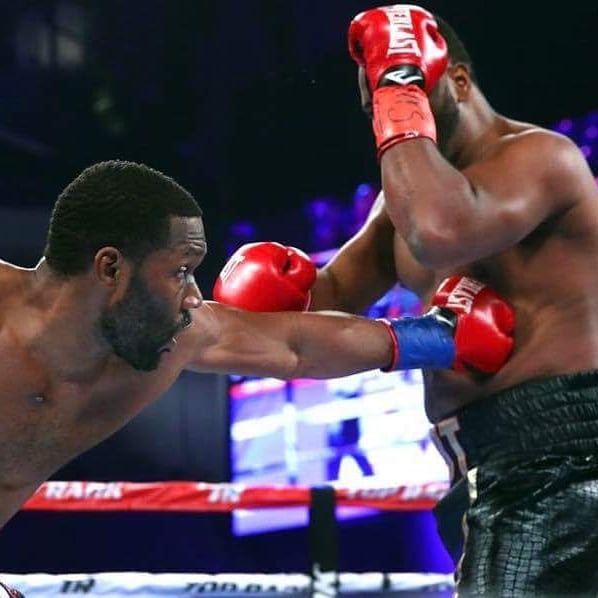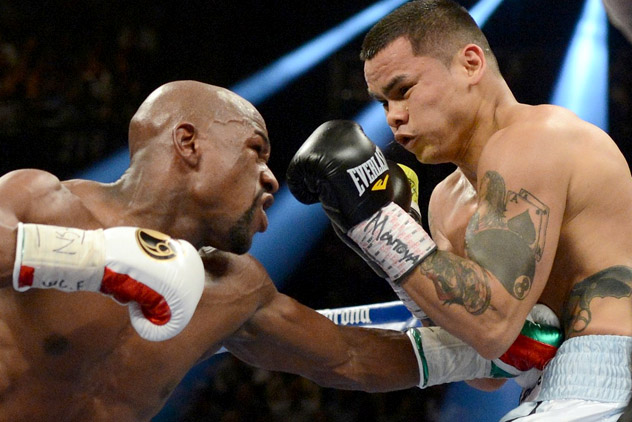Question & Answer With Lee Wylie (No. 3)
Suffering from uncertainty about your lead shoulder feint? Having trouble with your distance management or footwork? Are concerns about how best to parry a right lead keeping you up at night? Well, fear not: Lee Wylie is here to help. Just send in your questions on any strategic or tactical problems, and Lee will take care of the rest. Email your questions to thefightcity@gmail.com and Lee will respond as quickly as possible.

Dear Lee Wylie,
Have been visiting The Fight City every day for nearly a year and I’m a much-improved boxer and more knowledgeable fight fan as a result. Love the Willie Pep video, have watched it a couple dozen times. My grandfather grew up boxing with him in Hartford and I’ve heard lots of stories. Don’t have to ask who my favorite boxer is. Would love to get your take on the body jab. As I’ve started using it more (both to the heart/sternum, arm and lower abdomen), I feel like there’s a whole new world of possibilities. The punch has really grown on me and I like to use it early and often. Any thoughts on how best to use it? Or, on how to defend and counter against it? Thanks.
Keep ’em up,
JB
Dear JB:
First, thank you for the kind words regarding my work and the site in general; they are much appreciated. Knowing why and when to throw certain punches is just as important, if not more so, as knowing how to throw them. With that said, before discussing a technique’s application, a few words must be said on its execution.

Once you’ve correctly judged distance (you don’t want to be falling short by being too far away, nor do you want to lose leverage by being too close), make sure you don’t tip your hand by looking at your opponent’s body before throwing the jab. Next, you always want to step in with the jab, ensuring your body is lowered (knees bent, body forward and slightly to the right) and your lead shoulder is lined up with the target. Lowering your stance and jabbing up can, at times, be a good tactical choice (Ray Leonard was a master at this), but you should not jab down at a target. Doing so exposes your chin for right hand counters. You also want to keep your rear hand close to your chin, ready to block the opponent’s left. Upon completion, always be ready for your opponent’s counter, so try not to pull back with your chin in the air.
Among its many uses, the body jab is an excellent point scorer, a great way of disrupting your opponent’s balance and rhythm, an effective way to control distance, and a first-rate set-up for punches thrown up top. In addition, an authoritative body jab is brilliant for taking the wind out of your opponent’s sails. Even though it may not be a powerful punch in and of itself, thrown repeatedly over a period of time to the solar plexus, it will definitely affect your opponent. His legs will become heavy and he won’t be as energetic and effective later in the fight. Essentially, this is how Floyd Mayweather Jr. managed to turn the tide against Marcos Maidana in their first meeting. I don’t have the punch stats on hand, but I believe Maidana didn’t throw nearly as many punches in the second half of the fight as he did in the first. Mayweather’s body jab was one of the reasons for this.

Typically, the body jab is most effective when employed to condition your opponent and get him used to one thing before surprising him with something else. As an example, you set a pattern of throwing consecutive jabs to the body. When your opponent, expecting more of the same, begins modifying his guard to compensate, you feint to the body and suddenly switch your attack to a different target, i.e., the head. Similarly, the body jab can also replace the standard jab when used as part of a 1-2 combination, with the sudden “down-up” nature of the attack playing havoc with the opponent’s defense and expectations. Because you change levels when throwing the body jab, which not only draws the opponent’s guard low but his gaze as well, a looping overhand is a great follow-up punch, especially for shorter boxers against taller opponents.
By lowering your elevation and dipping slightly to your right, the body jab can also be used as a direct counter to your opponent’s jab. Timed right, as your jab lands in the pit of the opponent’s stomach, his jab sails harmlessly over your lead shoulder. This counter jab is even more effective when your opponent steps in with his jab, which further amplifies the blow’s impact. There’s actually an intriguing segment in the film A.K.A. Cassius Clay in which Cus D’ Amato, while playfully talking shop with Muhammad Ali, demonstrates how he would use a body jab to counter Ali’s jab. Interestingly, Cus’ counter attack elicits a hilarious yet revealing response from “The Louisville Lip.”

Once the body jab has been well established, you will be in a better position to begin controlling your opponent. And by that I don’t mean so much physically, but more mentally. Keeping the opponent guessing should always be near the top of any boxer’s agenda, regardless of whether he is an aggressive pressure fighter or a passive counter-puncher. And by building your offense around the body jab — working the opponent up and down, mixing standard jabs and body jabs with feints and left hooks, faking high only to then go low and vice versa — your opponent won’t know if he is coming or going.
Though he didn’t use the body jab all that often, I highly recommend studying Nicolino Locche, and in particular, his contest with Paul Fuji. In that fight, Locche didn’t really bring his right hand into play until after he’d conditioned Fuji with his left, as one would do with the body jab. In the early rounds, Locche didn’t throw much else but a jab and left hook, but by mixing up his targets, changing up his rhythm, and inserting feints between his attacks, he added an air of unpredictability to his game. He succeeded in keeping Fuji in a state of confusion and only when Fuji became accustomed to the left did Locche introduce him to the right. The nature of the bout, with one fighter “training” his opponent to react in a certain way in order to open up avenues for something else, is not unlike that between Floyd Mayweather and Diego Corrales, and Charley Burley and Oakland Billy Smith, fights which saw Mayweather and Burley put on body jab and feinting clinics respectively.

One more piece of tactical advice: it’s not advisable to use the body jab against southpaws. A lead hook from a southpaw is a natural counter for an orthodox opponent’s jab (the same goes for an orthodox opponent’s left hook against the southpaw’s right jab). Because you must step inside the southpaw’s lead foot to throw your body jab, you not only concede lead foot dominance, which brings your head closer to the southpaw’s more powerful left hand, but you leave your left flank exposed, making the hook an obvious choice for a lefty.
Rather, when looking to work a southpaw up and down, it’s better to substitute the body jab for a rear straight, which of course works best when preceded by a high, lead hand feint and should rarely be thrown without setting it up first. The rear straight against a lefty also allows you to naturally secure lead foot dominance while loading up your left side, which in turn nicely sets up your hook (Andre Ward’s deconstruction of Chad Dawson, anyone?). For some good examples of how, why and when to throw a rear straight to the body against opponents in an opposite stance, I suggest studying Floyd Mayweather, who always substitutes his body jab for a rear straight against lefties, and Guillermo Rigondeaux, who is downright Machiavellian with his lead hand feint-rear straight to the body.

Okay, I know I’ve mentioned Floyd Mayweather Jr. quite a bit here, but he is very much the man to study when it comes to all things body jab related. So much of Floyd Mayweather’s success inside the ring can be attributed to a command and mastery of this punch. Of course the same can be said for many other champions, including Willie Pep, Kid Chocolate, Sugar Ray Robinson, Sergey Kovalev and Andre Ward, who, incidentally, credits Mayweather with perfecting the topic in question.
As far as being on the receiving end of a body jab is concerned, there are a few things you can do. First, you can either “brush” or “cuff” the blow with your rear hand. The “brush-away” involves dropping the right glove down to meet the jab and then sweeping it in a counter-clockwise motion away from the body. This is an old-school method used by all-time great technicians such as Ezzard Charles and Harold Johnson, but is still used today by the likes of Terence Crawford and Saul “Canelo” Alvarez.
The problem with any kind of brushing or cuffing technique, however, is that the guarding rear hand must momentarily move away from the chin, leaving an opening for a more powerful punch such as a left hook. Another and more popular answer for the body jab is to hunker down in your high guard, incline your body toward the blow, and block it with either your right elbow or forearm. This technique is probably better suited for boxers who don’t have very quick reactions or who don’t employ much upper-body movement, as it allows your gloves to remain close to your face, which means you’re not an easy target for follow-up attacks to the head. Lastly, you can make the jab fall short by simply moving away from it. This is definitely the safest option, but if you overstep, you’ll find yourself out of range and unable to counter.

Lastly, you briefly mentioned jabbing at your opponent’s chest and lead shoulder. This isn’t necessarily the same thing as jabbing to the body and probably warrants its own discussion. All I will say for now is I wish more (orthodox) opponents spent time focusing on jabbing at Floyd Mayweather’s chest and lead shoulder as opposed to swinging away at his head with right hands.
I hope you find this information useful, JB. But remember, there are no hard and fast rules in boxing, only guidelines. Many of your tactical choices will depend on what styles are involved and what you feel most comfortable with. And you don’t need me to tell you that familiarity and comfort in the ring are honed through repetition, which necessitates constant drilling and sparring. Good luck!
Regards,






Very insightful stuff…as per usual Mr. Wylie. An underrated punch and a lovely one to watch a master throw. When watching Mayweather and Ward throw it, it seems to require a good bit of “snap” and about an equal amount of “push”. That must get tiring on the shoulder and triceps to keep it up round after round (I never was comfortable with this shot personally so I never put it in my arsenal, I guess I listed to too much commentary by Mr. Foreman on tv and he always stressed that “tall fighters should fight tall”, I figured he would know a thing or two about it so I did).